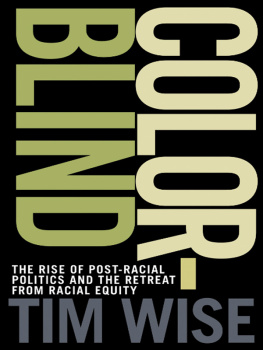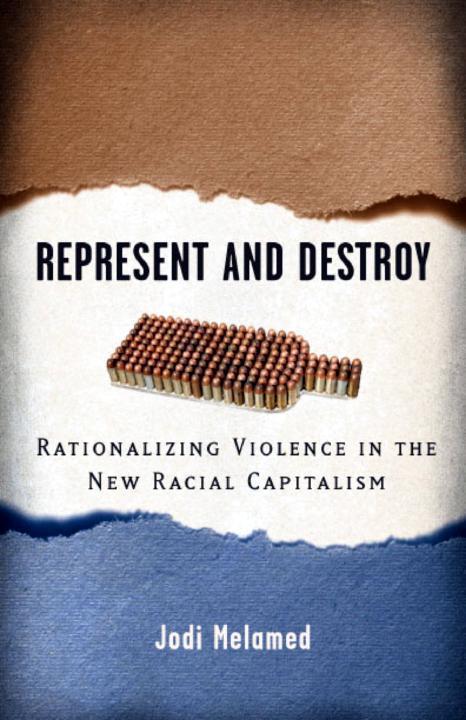Roderick A. Ferguson and Grace Kyungwon Hong Series Editors
RATIONALIZING VIOLENCE IN THE NEW RACIAL CAPITALISM
Jodi Melamed
Difference Incorporated





To Frances Greenstein and Barbara Greenstein Melamed Wills,
my grandmother and my mother, to honor the
unfaltering support they gave to each other and to me
ix
Reflecting in 1955 at the age of thirty-one on the situation of having become awriter, James Baldwin identified his greatest difficulty as having to face the massive weight, accumulation, and pervasiveness of representations spun out of discourses of the Negro problem. "The book shelves groan under the weight of [such] information," he wrote, "and everyone therefore considers himselfinformed." The geopolitical conditions that made it imperative to generate mountains of information, as well as implacable certainty, about race, oppression, and the United States in terms of problem and solution are where this book begins.
In the global convulsions after World War II, one world-historical formation ofthe dominant broke apart, and a newworld-historical formation emerged. The first, white supremacist modernity was brought to crisis by an accumulation of overlapping sociopolitical forces. World War II politicized the historical violences of white supremacy and revealed the links between European fascism, racial segregation, and colonial rule. These revelations gave motive force to anticolonial movements, whose struggles for militant or negotiated national independence ushered in an era of global decolonization. Anticolonialism provided, in turn, resources, ideas, and political leverage for renewed antiracist activism in the United States, and both benefitted from the energies of millions ofwar veterans returning home with a new understanding of racial oppression as a global issue. The beginning of the Cold War brought this volatile mix to a rupture point by depicting the opposition between a capitalist order of nation-states and international socialism as a racialized division. In particular, the Soviet Union portrayed racial violence in the United States as incontrovertible proof that the capitalist system that was emerging under U.S. leadership could only recapitulate the West's tradition of racial domination.
White supremacy had provided unification for the political, economic, and ideological structures of colonial capitalist modernity, and its loss of credibility as a racial discourse and a racial order also ruptured this world-historical formation. Yet the new world-historical formation that emerged out of this crisis was also unified by race. Indeed, it could not have been otherwise; the fact that race was identified as the central problem-the crux of everything wrong and unequal in governance, economy, and society-itself called for resolutions in the register of race. The new world-historical formation of the dominant was a formally antiracist, liberal-capitalist modernity determined by and shaping the conditions of U.S. global ascendancy. It required precisely the situation Baldwin decried: the massive production and dissemination ofrepresentations ofblack experience formulated in accord with the rubric of the Negro problem. In other words, the organizing terms of the Negro problem subtended the shift from white supremacy to a formally antiracist, liberal-capitalist modernity. According to these terms, U.S.-style democracy and capitalism would be redeemed through the full integration of African Americans into U.S. society. Full African American citizenship would demonstrate that liberal freedoms were antithetical to racial exploitation, and African American economic success would prove capitalism to be neutral to race rather than structured by it. In contrast to the demise of racism that antiracist and anticolonial social movements had envisioned, which was to be accompanied by the end of Western domination and capitalist exploitation, discourses of the Negro problem were instrumental for generating a new kind of antiracism that was productive for U.S. global ascendancy and leadership of transnational capitalism.
The entrance of an official, state-recognized antiracism into U.S. governmentality during the early Cold War, as the United States assumed leadership of transnational capitalism, brought about a decisive sea change in racial meanings and in U.S. and world racial orders. Represent and Destroy investigates the logics and procedures of successive official antiracist regimes, describes the unification they have provided for state-capital formations, and makes the case that these official antiracist regimes, which I collectively call race-liberal orders, have fatally limited the possibility of overcoming racism to the mechanisms of U.S.-led global capitalism, even as they have enabled new kinds of normalizing and rationalizing violences.
James Baldwin's famous postwar essay "Everybody's Protest Novel" (1949) can be read as a striking illumination of this sea change in racial orders as it was occurring. Baldwin's essay provides insight into how emerging race-liberal orders were able to simultaneously represent and destroy. In particular, Baldwin captured the elevation of the first formation of official antiracism, racial liberalism, to a new, nationalist common sense, exposing its transparency and guarantees as the hallmark of ideological dominance. Baldwin also tellingly identified the race/protest novel as a primary cultural technology for producing, disseminating, and implanting racial-liberal thinking. Finally, he described how the process of entering into representation through the mediation of official antiracist knowledges was to become subject to (and within) destructive normalizing and rationalizing systems.
The title of the essay is itself telling. "Everybody's Protest Novel" implies that the actual function of protest novels was not to reform society but rather to produce discourses of certainty. Literature, Baldwin suggested, was recruited to provide for everybody, in a manner noxious to none, the official story of racial difference within the emerging American project, the Cold War national mission. To better understand the contemporary situation, Baldwin contemplated the major historical precedent for a reformist literary text's having been integrated into state functioning to stabilize racial meanings, produce a war footing, and remake national identity: Uncle Tom's Cabin. For the 185os, when racially structured and signified contradictions between antagonistic labor systems were becoming irresolvable, Uncle Tom's Cabin provided a narrative that portrayed slavery as a moral evil and whose tropes, broadly disseminated, generated presumptive truths about racial difference that allowed the federal government to engage in civil war against the Southern states.











